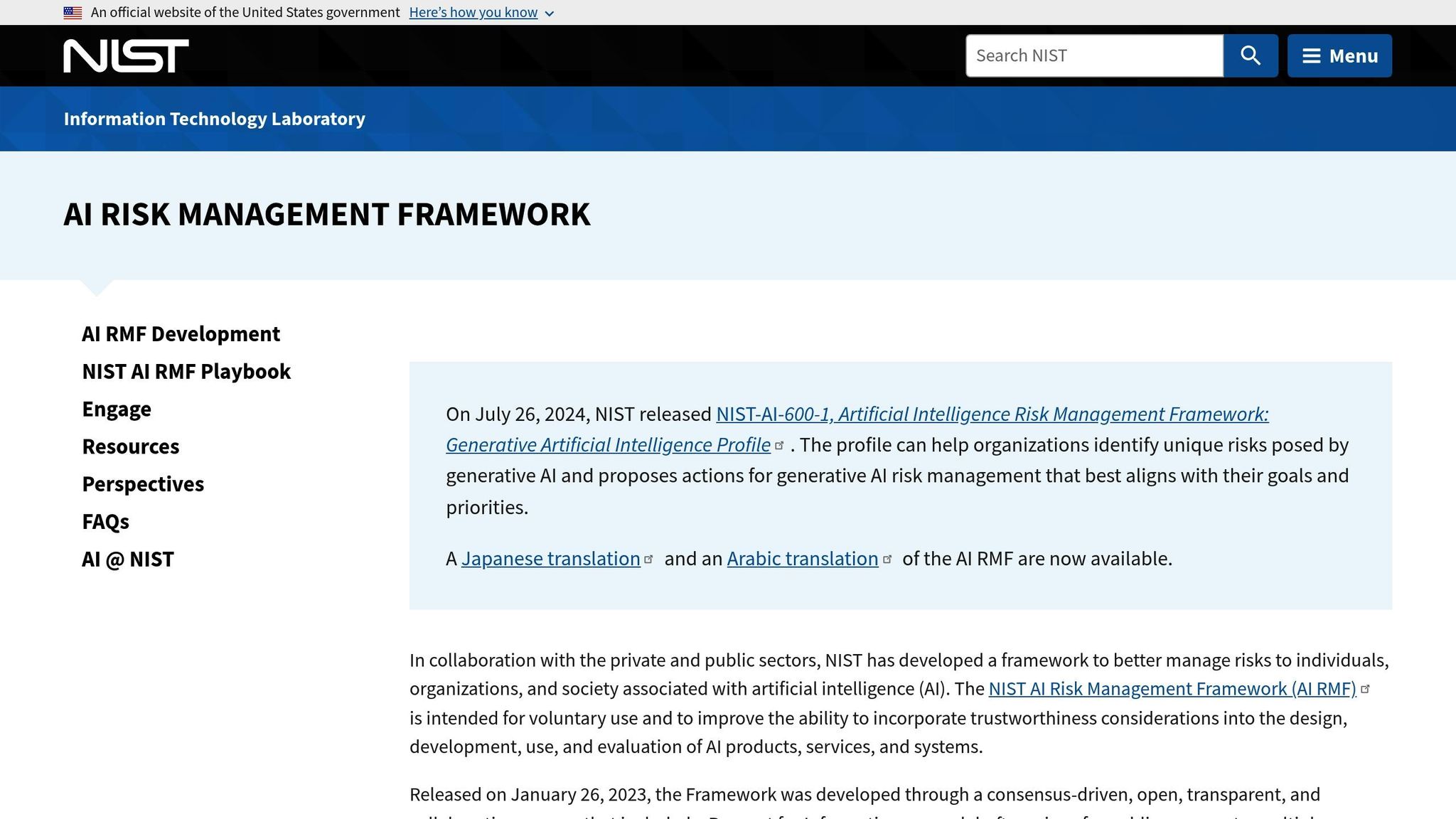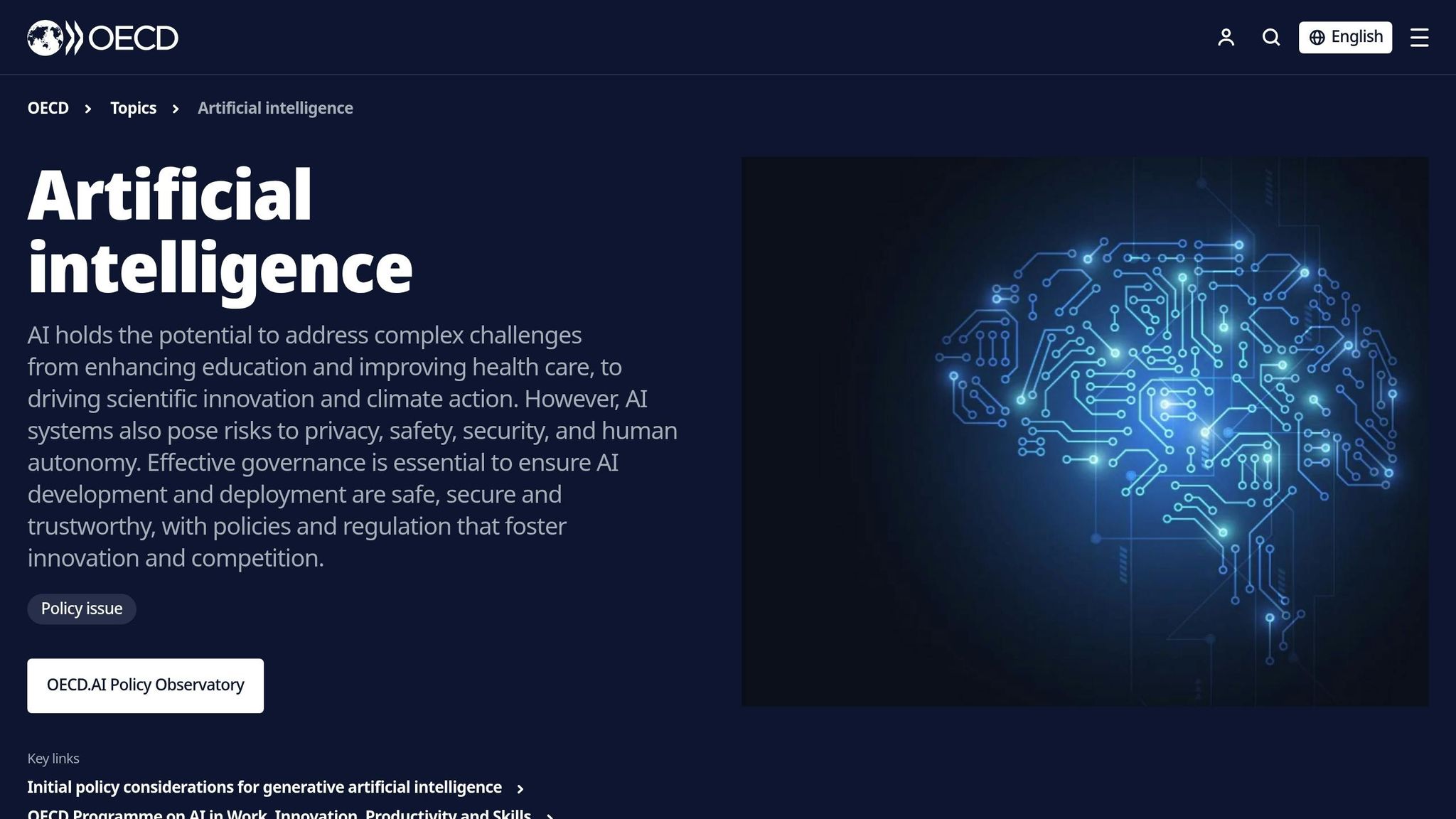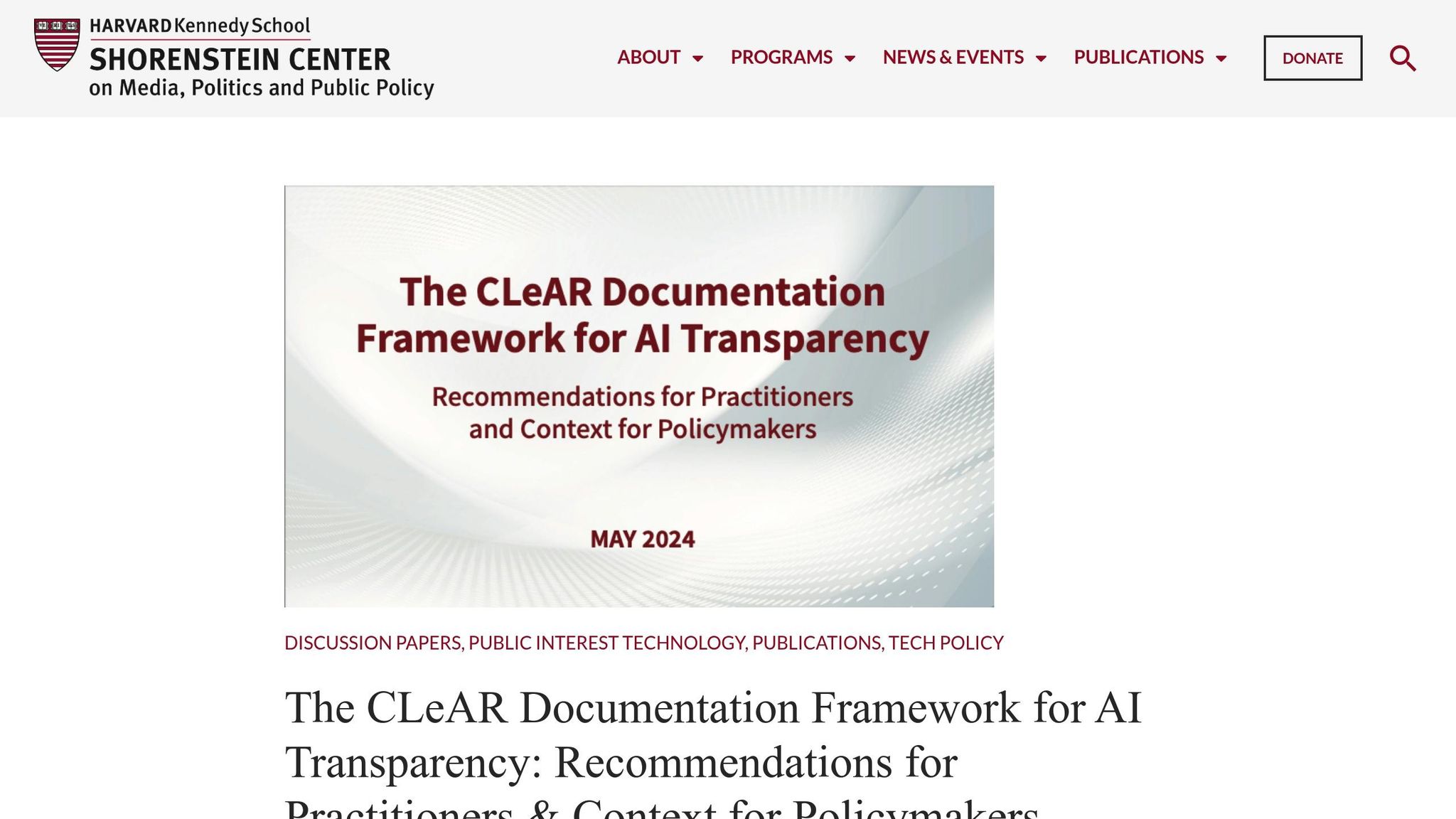AI Model Transparency Standards: Key Frameworks
Explore essential frameworks for AI transparency, including NIST and OECD, to enhance trust, compliance, and decision-making in your organization.

AI transparency ensures businesses can explain how their systems make decisions. This builds trust, reduces risks, and ensures compliance with regulations. Here’s a quick summary of key steps and global frameworks for transparency:
- Key Steps:
- Global Frameworks:
These frameworks help businesses improve trust, meet regulations, and reduce risks. For example, a financial firm increased customer retention by 34% and conversions by 41% using these standards. Ready to implement transparency in your AI systems? Start by auditing your processes and documenting thoroughly.
AI Transparency, Explainability, and Accountability (ISO 42001)
Main Transparency Requirements
To put transparency into action, businesses need to focus on three key areas:
Clarifying AI Decisions
Leverage tools like SHAP or LIME to explain how AI makes decisions. This helps both technical and non-technical audiences understand the process, building trust with stakeholders.
Keeping Records and Defining Roles
Keep thorough audit logs and clearly assign responsibilities at every stage of development. This approach helps ensure compliance with regulations.
Addressing AI Bias
Conduct regular audits of datasets and model outputs to spot and address bias. Applying techniques to correct these issues helps deliver fairer outcomes and protects your organization's reputation.
These steps are essential for meeting global standards.
Major Global Standards
Several international frameworks provide guidance on AI transparency, offering structured methods to meet the needs for clear decision-making, detailed record-keeping, and addressing bias. These frameworks align with the three main transparency requirements previously discussed.
NIST AI Risk Management Framework

The NIST AI Risk Management Framework helps organizations manage AI risks by identifying, assessing, and mitigating them throughout the AI lifecycle. It emphasizes systematic processes, including risk documentation and clear audit trails, ensuring accountability and clarity in role assignments.
OECD AI Principles

The OECD AI Principles serve as a global standard for responsible AI practices. They emphasize documenting key aspects such as design decisions, data sources, processing methods, and how models arrive at decisions. This thorough documentation aids in bias detection and enhances explainability.
CLeAR Documentation Standard

The CLeAR (Comprehensive, Logical, and Accessible Reporting) standard focuses on creating consistent and detailed documentation for AI systems. By standardizing records from development to deployment, it supports accountability and ensures compliance with record-keeping requirements.
These frameworks - NIST, OECD, and CLeAR - offer organizations the tools they need to develop transparent and reliable AI systems while adhering to international best practices.
Real Business Results
These real-world examples highlight measurable outcomes achieved through established global frameworks.
Key Industry Applications
Following principles from NIST, OECD, and CLeAR, a financial firm partnered with NAITIVE to implement a Voice AI Agent. This agent handled 200 outbound calls daily, leading to a 34% increase in customer retention and a 41% rise in conversions. In customer support, NAITIVE's AI Agent now addresses 77% of Level 1 and Level 2 inquiries, ensuring accountability with comprehensive documentation.
Benefits of Transparency
- Stronger customer trust: Leads to better retention rates
- Regulatory compliance: Reduces the risk of penalties
- Improved efficiency: Speeds up issue resolution
- Risk reduction: Facilitates clearer bias detection
- Enhanced employee confidence: Encourages adoption of new systems
Next, we'll dive into actionable steps for applying these transparency standards.
Setting Up Transparency Standards
Implementation Steps
To align with NIST, OECD, and CLeAR transparency guidelines, follow these practical steps:
- Conduct an initial audit: Review your operations, data sources, and AI use cases. Create a roadmap with clear success metrics tied to your business goals and regulatory requirements.
- Document thoroughly: Record system architectures, data sources, decision-making criteria, validation outcomes, and bias mitigation efforts. Assign specific governance roles to ensure accountability.
- Integrate and monitor: Securely implement AI systems, followed by rigorous testing, debugging, and performance monitoring to maintain transparency.
- Train your team: Provide clear and concise training materials to equip teams with the skills needed for managing, auditing, and optimizing transparency efforts.
- Use managed services: Consider a managed service to handle ongoing monitoring, model updates, and transparency upkeep.
Collaborate with professional advisors to maintain transparency long-term.
Expert Help for Transparency
NAITIVE AI Consulting Agency offers comprehensive support, including audits, secure integration, governance documentation, team training, and continuous managed services to ensure transparency.
Summary
Clear transparency standards play a key role in improving business performance and meeting compliance requirements. For example, one client saw a 34% increase in retention, 41% boost in conversions, and 77% automation of L1-L2 support after adopting frameworks like NIST, OECD, and CLeAR.
By adopting transparency standards, businesses can:
- Build trust with stakeholders through clear and understandable AI decisions
- Show compliance with regulatory requirements
- Integrate AI smoothly into existing workflows
Ready to get started? Use our implementation steps to create your roadmap to these standards.




